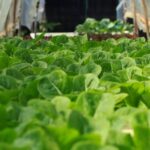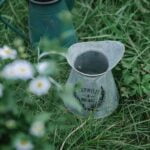Intensive gardening is a method of vegetable gardening which focuses on maximizing yield and space by closely planting and efficiently utilizing garden resources. This approach allows gardeners to produce a higher quantity of vegetables in a smaller area, making it an attractive option for those with limited space or those looking to maximize their harvest.
The concept of intensive gardening revolves around the idea of getting the most out of every square foot of garden space. By carefully planning and designing the layout, selecting the right mix of vegetables, and implementing specific techniques for soil preparation, planting, and maintenance, gardeners can achieve impressive results in a relatively small area.
In this article, we will explore the principles and practices of intensive gardening, including its benefits, planning considerations, soil preparation techniques, planting and maintenance tips, companion planting strategies, harvesting methods, succession planting approaches, as well as a comparison to traditional gardening methods. Whether you are an experienced gardener looking to increase your yield or a beginner seeking to make the most out of your limited gardening space, intensive gardening offers practical solutions that can be tailored to fit your needs.
So let’s dig in and discover how this method works and how it can benefit your vegetable garden.
Benefits of Intensive Gardening
Intensive gardening is a method of vegetable gardening that focuses on maximizing yield and space by carefully planning and maintaining the garden. There are several benefits to using intensive gardening methods, including:
- Maximizing Yield: By planting in closely spaced, raised beds or containers, intensive gardening allows for more plants to be grown in a smaller area. This means a higher yield of vegetables from the same amount of space compared to traditional gardening methods.
- Space Efficiency: Intensive gardening is ideal for small or urban spaces where traditional gardens may not be feasible. By using techniques such as vertical gardening, intercropping, and succession planting, you can make the most of limited space and grow a variety of vegetables.
- Reduced Maintenance: The close spacing of plants in an intensive garden creates a natural canopy that suppresses weeds, reducing the need for regular weeding. Additionally, because the garden is more compact, it is easier to water, fertilize, and monitor for pests and diseases.
In order to maximize yield and space in an intensive garden, proper planning and maintenance are essential. Careful consideration must be given to layout design, plant selection, soil preparation, watering schedule, and pest control. By implementing these techniques and following best practices for intensive gardening, you can enjoy bountiful harvests from even a small plot of land or container garden.
Overall, intensive gardening offers numerous advantages over traditional gardening methods when it comes to increasing productivity and making the most out of limited space. Whether you have a small backyard or balcony, or simply want to grow more vegetables with less effort, implementing intensive gardening techniques can help you achieve your goals while enjoying fresh produce throughout the growing season.
Planning Your Intensive Garden
Intensive gardening is a method of cultivating and growing vegetables that maximizes space and yield. When planning your intensive garden, it is important to carefully consider the layout and types of vegetables you want to grow. Here are some key steps for planning your intensive garden:
1. Layout Design: One of the first steps in planning an intensive garden is to design the layout. This involves determining the size and shape of your garden beds or containers, as well as considering factors such as sunlight exposure and access to water. Some popular layouts for intensive gardening include raised beds, square foot gardening, and vertical gardening.
2. Choosing the Right Vegetables: In intensive gardening, it is essential to choose the right vegetables that will thrive in close proximity and yield a high output. Leafy greens such as lettuce and spinach, root vegetables like carrots and radishes, and compact varieties of tomatoes and peppers are all excellent choices for intensive gardening. It’s also important to consider succession planting, which involves planting different crops in the same space at different times to maximize productivity.
3. Utilizing Interplanting Techniques: Another important aspect of planning an intensive garden is interplanting – planting different types of vegetables together in order to maximize space and nutrients. For example, companion planting certain crops can help control pests and improve soil health. Additionally, combining tall plants with low-growing ones can further optimize space.
By carefully designing the layout of your intensive garden and choosing the right vegetables to grow, you can create a productive and efficient growing space that yields bountiful harvests throughout the growing season.
Soil Preparation for Intensive Gardening
Intensive gardening is a method that involves maximizing the productivity of a garden by utilizing space, time, and resources efficiently. One crucial aspect of intensive gardening is soil preparation, which focuses on enhancing fertility and nutrient retention to support the high yields of vegetables it aims to produce. By optimizing the soil, intensive gardening can create an ideal environment for plant growth and improve the overall health of the garden.
To enhance fertility in the soil for intensive gardening, organic matter such as compost or well-rotted manure is typically added. This not only provides essential nutrients for plant growth but also improves the structure of the soil by increasing its ability to retain moisture and nutrients. Additionally, incorporating organic matter helps promote beneficial microbial activity in the soil, creating a thriving ecosystem below ground that supports healthy plant development.
In addition to enhancing fertility, nutrient retention is another important consideration in soil preparation for intensive gardening. Retaining nutrients in the soil ensures that plants have access to the necessary elements for their growth and development. Techniques such as mulching can help prevent nutrient leaching and erosion while also regulating soil temperature and moisture levels. By focusing on both fertility and nutrient retention, intensive gardening can establish an optimal growing environment that supports high yields of vegetables throughout the season.
Planting and Maintenance
Sowing Seeds
In intensive gardening, sowing seeds is typically done in a precise and concentrated manner. To maximize yield and space, seeds are often planted closer together than in traditional gardening methods. This requires careful attention to spacing and depth to ensure proper growth and development of the plants. Additionally, staggered planting or intercropping can be utilized to further optimize space and yield.
Watering Techniques
Watering is a crucial aspect of maintaining an intensive garden. With plants placed closely together, it’s important to ensure that each one receives adequate water. Drip irrigation systems or soaker hoses are commonly used in intensive gardening to deliver water directly to the base of the plants, minimizing water waste and ensuring efficient hydration. Mulching is also employed to help retain soil moisture and reduce the need for frequent watering.
Tending to Your Garden
Regular maintenance is essential for the success of an intensive garden. This includes tasks such as weeding, pruning, and monitoring for pests or disease. With plants in close proximity, weeds can quickly take over, making regular weeding a necessity. Pruning helps prevent overcrowding of plants and allows for adequate air circulation. Additionally, keeping an eye out for signs of pests or disease allows for early intervention and prevention of widespread damage.
Overall, planting and maintaining an intensive garden requires careful planning, attention to detail, and consistent upkeep. However, the benefits of maximizing yield in a limited space make it a rewarding endeavor for many gardeners looking to make the most of their growing area.
Companion Planting in Intensive Gardening
Companion planting is a key aspect of intensive gardening, which involves strategically planting different types of vegetables together to benefit each other. One common example of this is planting crops that repel pests next to those that are vulnerable to them.
For example, planting basil near tomatoes can help deter tomato hornworms. Additionally, certain plants have the ability to add nutrients back into the soil when planted alongside specific vegetables, which can be incredibly beneficial for maintaining soil fertility over time.
In intensive gardening, companion planting is essential for maximizing space and yield while maintaining healthy plant growth. By intentionally selecting plants that complement each other in terms of nutrient needs, pest control, and growth habits, gardeners can create a mutually beneficial environment where each plant supports the others. This can help limit the need for chemical pesticides and fertilizers while promoting a more sustainable and environmentally friendly approach to gardening.
When planning a companion planting layout for an intensive garden, it’s important to research which plants work best together and which should be kept apart to avoid inhibiting growth or attracting unwanted pests. Understanding the natural relationships between different types of vegetables will help ensure a successful harvest and overall healthy garden ecosystem.
| Companion Plants | Benefit |
|---|---|
| Basil with Tomatoes | Repels tomato hornworms |
| Carrots with Onions | Deters carrot flies and onion maggots |
| Lettuce with Radishes | Lettuce provides shade for radishes while radishes deter leafminers from lettuce |
Harvesting and Succession Planting
Intensive gardening is a method that allows for maximum yield and efficient use of space. One key aspect of this gardening technique is the practice of succession planting, which involves planting new crops as soon as one crop is harvested. This allows for continuous yield and the utilization of seasonal crops throughout the growing season.
Succession planting is essential in intensive gardening as it ensures that the garden is constantly producing crops, maximizing the use of space and resources. By carefully planning and timing the planting of different crops, gardeners can extend their harvest season and enjoy a steady supply of fresh produce. This method also helps to prevent soil depletion by constantly replenishing nutrients with new plantings.
Another important aspect of harvesting in intensive gardening is proper timing. It’s crucial to harvest crops at their peak ripeness to ensure optimal flavor and nutritional content. Additionally, regularly harvesting mature fruits and vegetables encourages more production from the plants, resulting in a higher overall yield. Through strategic planning and proper maintenance, an intensive garden can provide an ongoing abundance of fresh, seasonal produce for its caretakers.
Comparison to Traditional Gardening Methods
In conclusion, intensive gardening offers numerous benefits and advantages over traditional gardening methods. By maximizing yield and space, intensive gardening allows for a higher productivity in a smaller area, making it an ideal option for urban or small-scale gardeners. The careful planning and design of the layout also contribute to a more efficient use of space, enabling gardeners to grow a wider variety of vegetables in a limited area.
Furthermore, intensive gardening focuses on soil preparation and maintenance, which results in enhanced fertility and nutrient retention. This ultimately leads to healthier plants with higher yields. Additionally, the practice of companion planting in intensive gardens not only aids in pest control but also promotes nutrient enhancement through the relationships between different plant species. As a result, intensive gardening offers a more sustainable and organic approach to growing vegetables.
Overall, while traditional gardening methods have their own merits, the advantages of intensive gardening are clear. Its ability to maximize yield and space, enhance soil fertility and nutrient retention, utilize companion planting for pest control and nutrient enhancement, as well as promote continuous yield through succession planting make it a highly attractive method for both experienced and novice gardeners looking to optimize their vegetable production.
With proper planning and maintenance, intensive gardening can be a rewarding practice that yields bountiful harvests throughout the growing season.
Frequently Asked Questions
What Is the Intensive Gardening Method?
The intensive gardening method is a technique that involves maximizing the use of garden space to produce the highest yield possible. It focuses on planting densely, incorporating companion planting, and using techniques like intercropping and succession planting to make the most of a small or limited area.
What Is the Most Intensive Type of Vegetable Garden?
The most intensive type of vegetable garden is often considered to be a raised bed garden. This method allows for concentrated planting in a contained area, making it ideal for small spaces or urban gardens. By creating fertile soil and organizing plants strategically, raised bed gardens can produce a high yield of vegetables in a compact space.
What Is an Intensive Vegetable Garden Layout?
An intensive vegetable garden layout typically involves closely spaced plantings, often in geometric patterns or rows to maximize productivity. This may include utilizing techniques like square foot gardening or creating keyhole beds to efficiently use available space while still providing access for maintenance and harvesting.
Additionally, incorporating vertical gardening elements such as trellises or vertical planters can also be part of an intensive vegetable garden layout.

If you’re looking to get into vegetable gardening, or are just looking for some tips on how to make your current garden better, then you’ve come to the right place! My name is Ethel and I have been gardening for years. In this blog, I’m going to share with you some of my best tips on how to create a successful vegetable garden.





